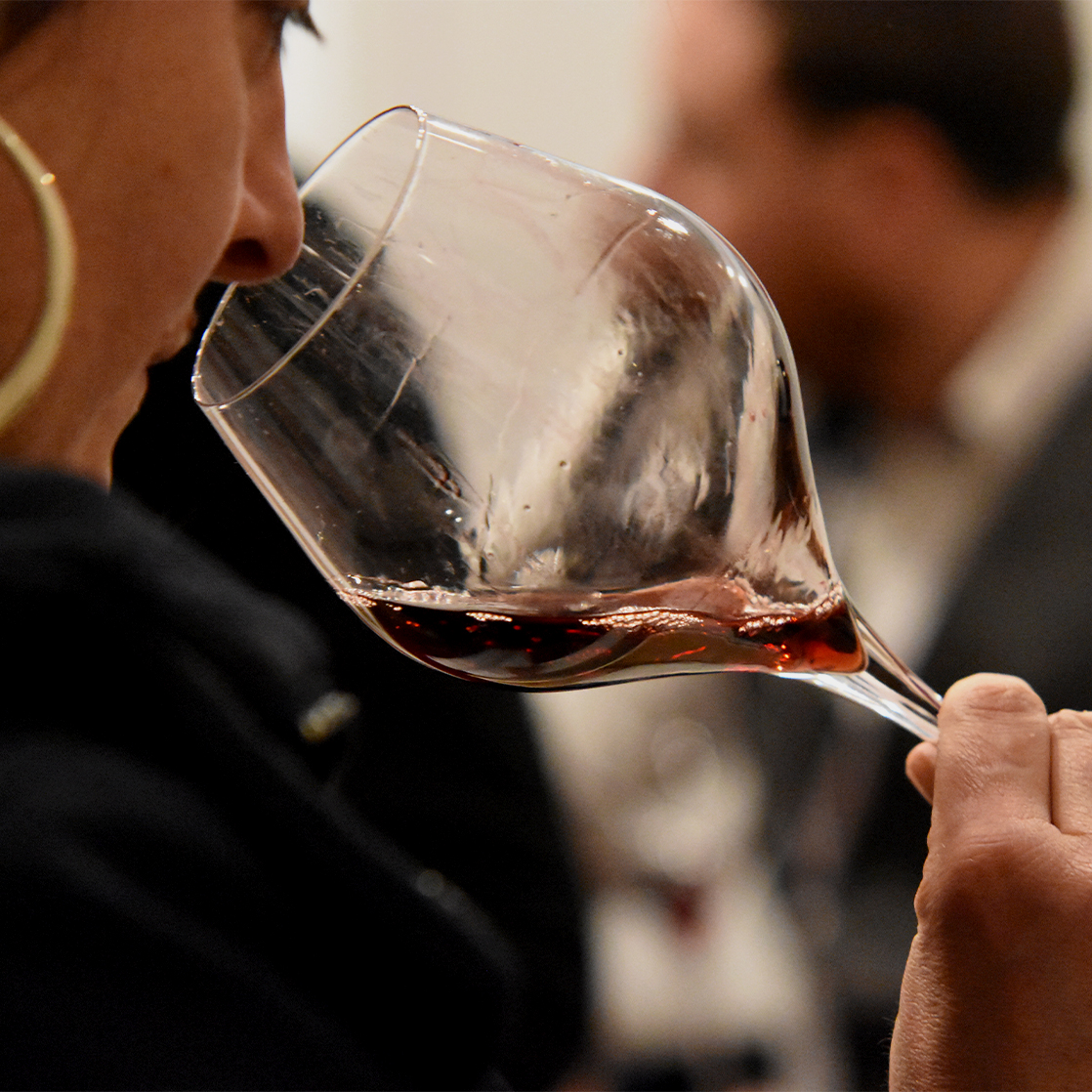The future of Amarone della Valpolicella: a journey into the contemporary.

04/04/2024
ITALY
The descent of red wines, only stopped by the post-Covid rebound but made vertical by a negative 2023, has already been underway for some time. Accomplice to a mix of generational and ethnic factors – but also climatic factors – palates around the world are progressively shifting their preferences towards types of alcoholic beverages other than wine, and in particular its symbolic colour. This is the snapshot of the Observatory of the Italian Wine Union (UIV), the subject of today’s focus at Amarone Opera prima (3-4 February), the customary annual appointment dedicated to the King of Veneto reds organised by the Valpolicella Wine Consortium, with 70 companies taking part.
A talk, ‘Climate, production and markets: Valpolicella at the proof of change’, in which the Consortium wanted to question itself on the future of a young appellation, protagonist of vertiginous growth over the last twenty years.
“We chose a more critical than celebratory approach to celebrate the 20th edition of the event dedicated to Amarone,” said the president, Christian Marchesini.
As a Consortium, however, we believe that the best way to continue growing is to seriously and punctually analyse the challenges that climate change, new consumption dynamics and market developments pose to the denomination,’ he concluded.
We must, we want to and we can make an increasingly competitive, more contemporary Amarone’.
For the Vice President of the Consortium, Andrea Lonardi (MW): ‘Amarone has in the past been a wine that satisfied a market demand.
The Valpolicella producers were among the best, especially in some markets, to understand that there was a need for a smooth, warm and pleasant wine. This has enabled great volumetric success.
In order to do so, however, they went too far with raisining and the need to chase a style that this segment of the market demanded.
Today, that segment is no longer growing and offers far more shadows than security for the future. We must therefore change and evolve by redirecting our wines towards a change in terms of both market geography and consumer profiling.
To do this requires, also but not only, a stylistic change.
The wines that are commercially sound are in fact the fine wines, those that have a deep bond with their territory of origin, wines that have values and a specific communicative wording that make them identifiable.
It is necessary to think of an Amarone that balances its production factors: the method (set-aside), the territory (soil, vines, climate), the people (producers, companies) and communication.
The challenge is clearly complex, from volume to value, and requires changes: cultural, production, legislative and communication”.
According to the calculations of the UIV Observatory, in 2023 Amarone suffered a setback in export volumes (-12%), at around 75 thousand hectolitres, a figure nonetheless in line (+1%) with 2019 and significantly up over the last 10 years (+17%). The tendential fall in exports over the last year is due on the one hand to real reductions in consumption (in particular Scandinavia and Canada, and partly Germany, which nevertheless recorded a strong increase in sales in the retail channel), while in the United States, the general trend for red wines was flanked by the cyclical effect of product destocking accumulated at the distribution stage, which involved all Italian wine and not only, significantly slowing down wine demand from abroad. Finally, sales in the Italian retail channel were stable.
A picture, as illustrated today, that shows major drops for the main grape varieties of the 5 Continents and the main competitors, with exports of French reds in the last two years contracting by 15% and Spanish reds by more than 20%. Last year, global consumption of this type of wine fell by 7% compared to 2021, with major reductions in the last 12 months in the main outlet markets, starting with the USA (-9%), Canada (17%) through to Scandinavian countries, China and Italy itself (-5%).
“For the first time after decades of boom, the wine market is experiencing a sort of restriction of the enclosure in which it operates,” said the head of the UIV Observatory, Carlo Flamini, “but there are important exceptions in the premium segments of our offer. In the USA, for example, in the face of general sales of Italian red wine at -9% in the most profitable channel, that of on-premise (restaurants, clubs, hotels), the only price bracket that has managed to wrest increases is the wholesale segment above 25 dollars a bottle (+2%). This is where Italian products must start again, forgetting the concept of ‘mass market’ reds and cultivating strong values of identity and territorial and stylistic consistency’.
Amarone Opera prima is dedicated to the 2019 vintage. A vintage that, according to the Consortium’s tasting panel, is awarded 5 stars thanks to a “high sensory quality, with olfactory and taste profiles that reflect the characteristics of the appellation in a centred and modern way. As far as longevity prospects are concerned, the 2019 vintage has great ageing potential without lacking in freshness and drinkability, perfectly matching today’s consumption trends”.